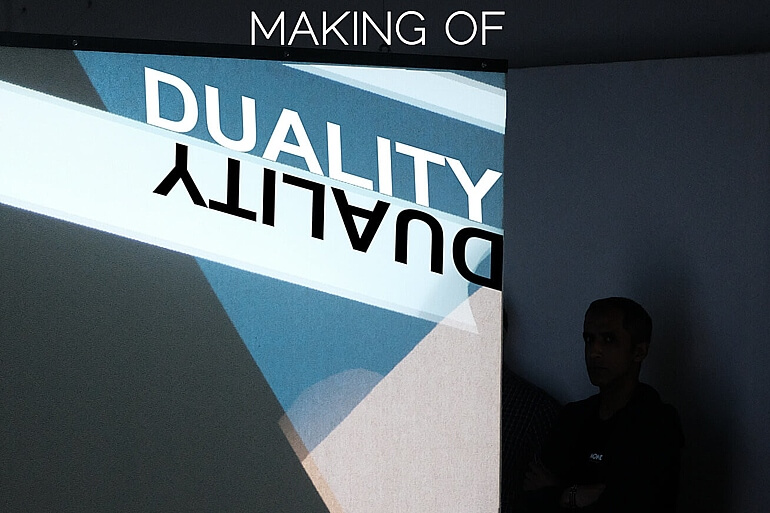
Details about testing and building my "Duality" installation.
The artwork focuses on polar opposites and the grey area in between. This post frames some of its behind-the-scenes; see the project page for the official documentation.
Projection Version: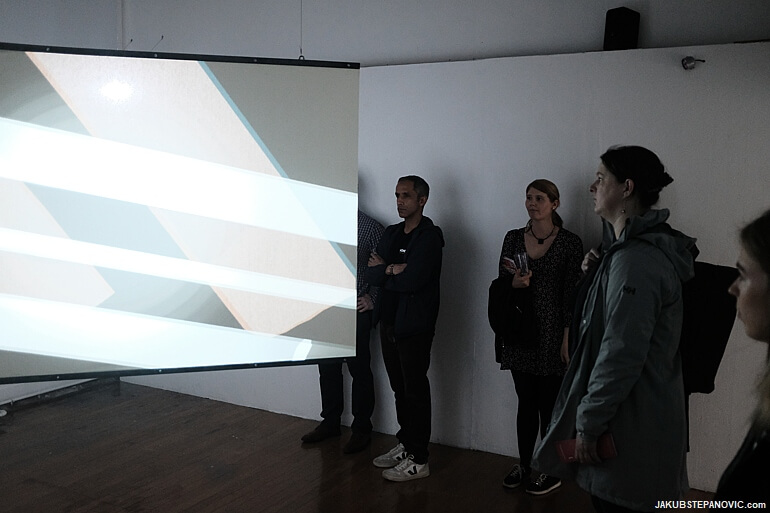
The "Duality" builds on my experiences from building digital artworks "Time" (2018), and "Journey to Scotland" (2017). It uses a PC to mix my drawings with real-time generated abstract graphics, and it is accompanied by audio made of synths and samples.
However, there were many firsts in making the "Duality," which meant a lot of testing. The centerpiece of the installation is a semi-transparent screen with a separate projection on each side of it. As I wanted to get the projections to partially blend together, I needed to find the right material and make it from scratch.
Also, every few minutes, the animations switch into a live camera feed of the visitors. However, as the projectors are the only light source in the room, it would be too dark to capture any clear footage by using conventional technology. So, I utilized infrared (IR) lamps to brighten both sides of the screen.
-

- Lights, camera, action! The IR light is invisible to human eyes, but it is possible to capture by a special camera – so the video looks like the room is well-lit.
-

- The visuals are accompanied by 4.0 surround sound – There’s a speaker for each wall of the room, allowing the audio to circle around the visitors.
When I found the right material for the projection screen, I calculated its size based on the room's dimensions and the projectors' throw ratio. Then I built the frame.
Bolting it together and then suspending it from the ceiling was good fun!

While the projection screen was the centerpiece of the installation, there were other things to take care of, such as building shelves for the projectors, darkening the windows, etc.
-
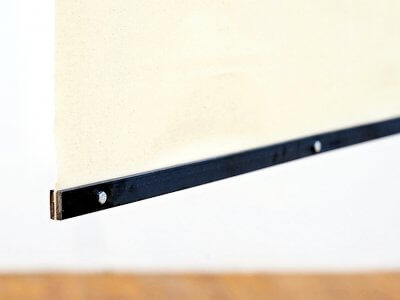
- The screen resonates with the “Duality” concept, as it stretches soft canvas between pieces of rigid iron.
-

- Projectors are placed in 2.7m, so the visitors can cast a shadow to influence the visuals, like people can cast their opinion on an issue.
For visual and safety reasons, all the wires are hidden behind walls. And there are a lot of them! To bring power to all the devices, and to connect them together required about 100 meters of cables.
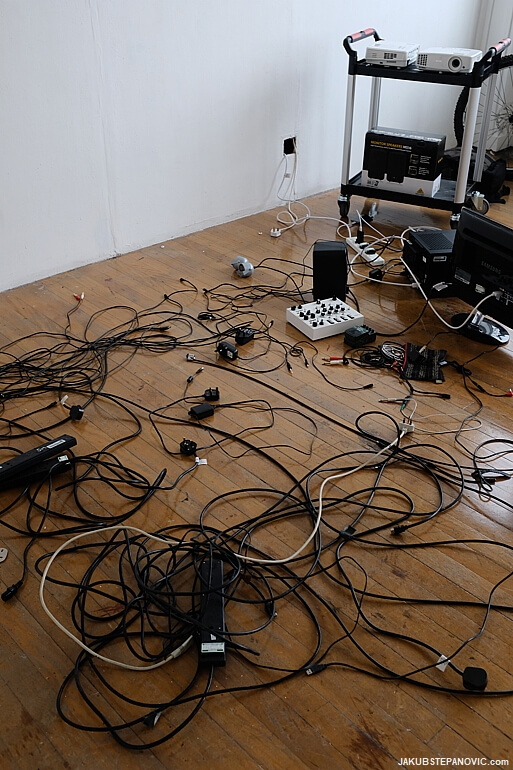
The show ended to be a big success, attracting over 15,000 visitors.
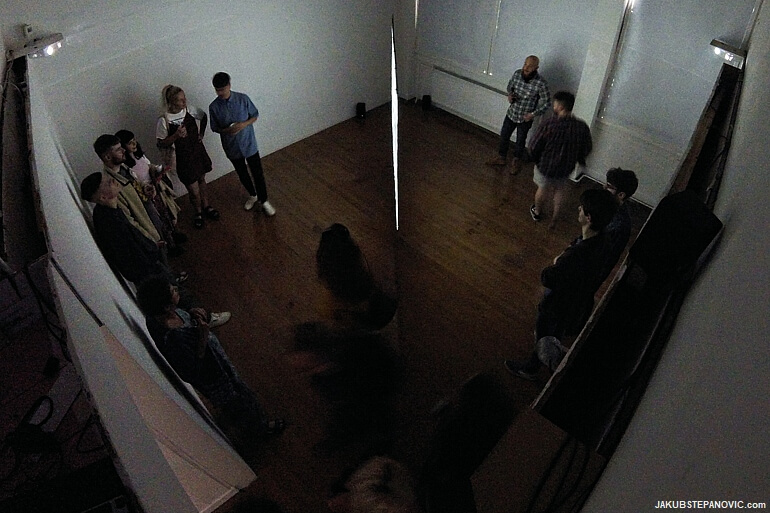
It resulted in an invitation to show the work at the Royal Scottish Academy (RSA) in Edinburgh. This was fantastic news, but it also brought many challenges. The RSA is a part of the National Gallery, a Category A listed building - so I wasn't able to mount anything to the ceiling or floors, use the speakers, and there wasn't a dark room available to fully expose the potential of the projection.
These limitations led to the creation of the TV's Version, a more intimate solution where the two sides of the projection screen are replaced by two flat-screen TVs.

Adapting the visuals to the TVs meant to up-scale the resolution of all the animations, and to condense the sound into two channels available through headphones. Furthermore, it required a completely different algorithm to keep each side of the topic to a different screen, yet maintain their connection.
Many days of staring into the computer's screen and typing numbers later, it worked out.
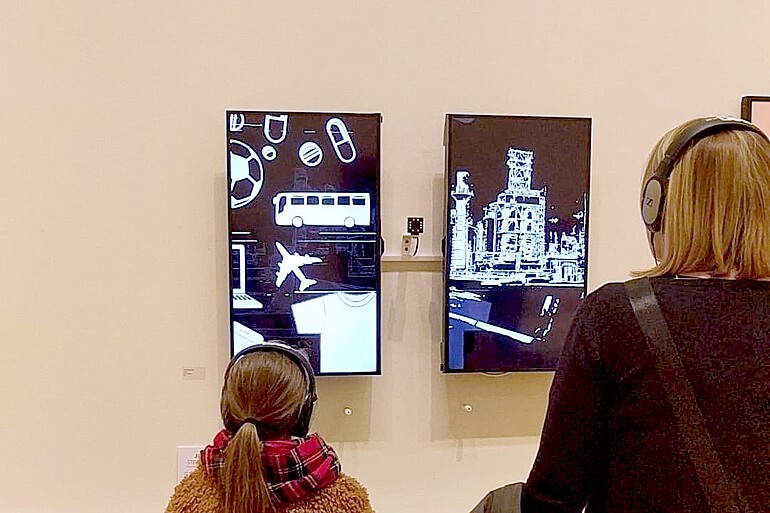
If you liked the concept of "Duality," browse my portfolio; many of my works reflect a similar wordplay approach. You might also enjoy stories about my other projects, such as:
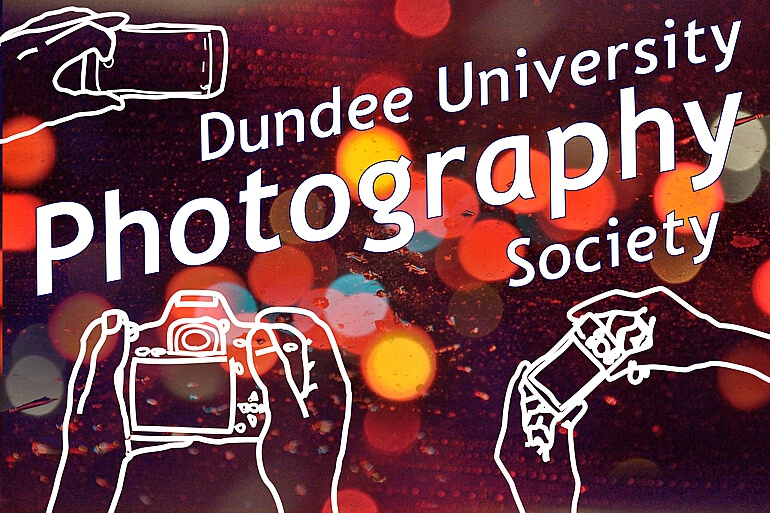
|
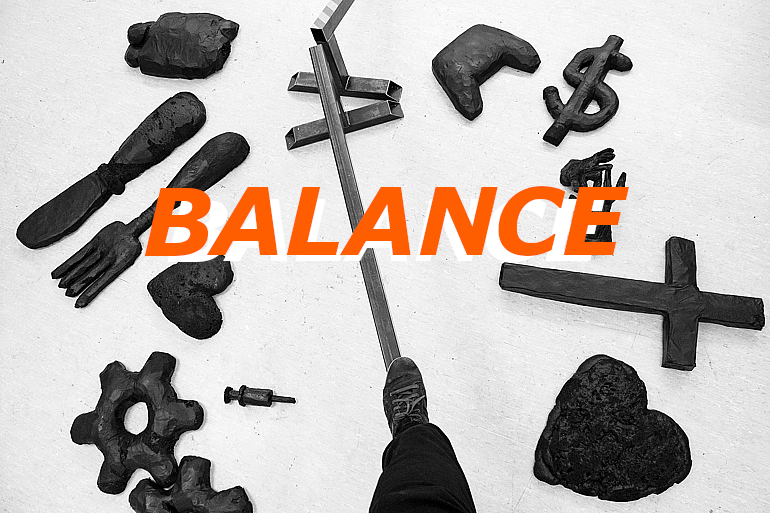
|
If you think your friends would enjoy it as well, please share. Thanks for reading.









Comments are closed.